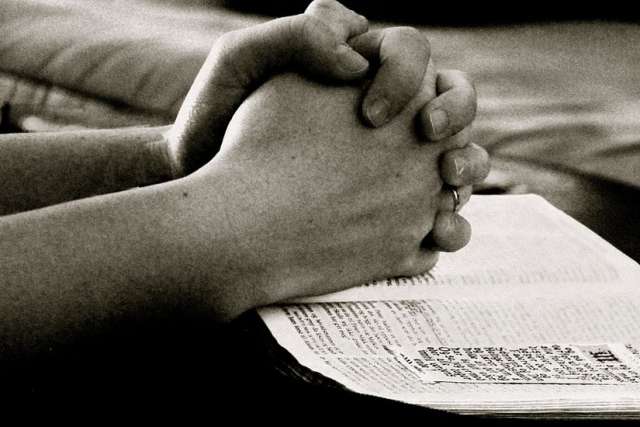We’ve all had the feeling at times when in the face of a dire situation we need to do something, but there’s nothing we can do, no magic wand we can wave to make things better.
But there is something we can do.
I recall an event in my own life several years ago: I was teaching summer school in Belgium when, late one evening, just as I was getting ready for bed, I received an e-mail that two friends of mine, a man and a woman recently engaged, had been involved that day in a fatal car accident. He was killed instantly and she was in serious condition in hospital. I was living by myself in a university dorm, thousands of miles from where this all happened, and thousands of miles from anyone with whom I could share this sorrow. Alone, agitated, panicked and desperately needing to do something but being absolutely helpless to do anything, I was literally driven to my knees. Not being able to do anything else, I picked up the prayer book that contains the Office of the Church and prayed, by myself, the Vespers prayer for the dead. When I’d finished, my sorrow hadn’t gone away, my friend was still dead, but my panic had subsided, as had my desperate need to do something (when there was nothing I could do).
My prayer that night gave me some sense that the young man who’d died that day was alright, safe somewhere in a place beyond us, and it also relieved me of the agitation and panicked pressure of needing to do something in the face of agitated helplessness. I’d done the only thing I could do, the thing that’s been done in the face of helplessness and death since the beginning of time; I’d given myself over to prayer and to the rituals of the community and the faith of the community.
It’s these, prayer and ritual, which we have at our disposal at those times when, like the man in Sense and Sensibility, we need to do something or we will go mad. That’s not only true for heavy, sorrowful times when loved ones are sick or dying or killed in accidents and we need to do something but there’s nothing we can do. We also need ritual to help us celebrate happy times properly. What should we do when our own children are getting married? Among other things, we need to celebrate the ritual of marriage because no wedding planner in the world can do for us what the ritual, especially the Church ritual, of marriage can do. Weddings, just like funerals, are a prime example of where we need ritual to do for us what we cannot do for ourselves.
Sadly, today, we are a culture that for the most part is ritually tone deaf. We don’t understand ritual and therefore mostly don’t know what to do when we need to be doing something but we don’t know what to do. That’s a fault, a painful poverty, in our understanding.
The Trappist monks who were martyred in Algeria in 1996 were first visited by the Islamic extremists, who would later kidnap and kill them, on Christmas Eve, just as they were preparing to celebrate Christmas Mass. After some initial threats, their eventual murderers left. The monks were badly shaken. They huddled together as a group for a time to digest what had just happened. Then, not knowing what else to do in the face of this threat and their fear, they sang the Christmas Mass. In the words of their Abbott: “It’s what we had to do. It’s all we could do! It was the right thing.” He shared too, as did a number of the other monks (in their diaries) that they found this, celebrating the ritual of Mass in the face of their fear and panic, something that calmed their fear and brought some steadiness and regularity back into their lives.
There’s a lesson to be learned here, one that can bring steadiness and calm into our lives at those times when we desperately need to do something, but there’s nothing to do.
Ritual: It’s what we have to do. It’s all we can do! It’s the right thing.
(Fr. Rolheiser can be reached at ronrolheiser.com)


